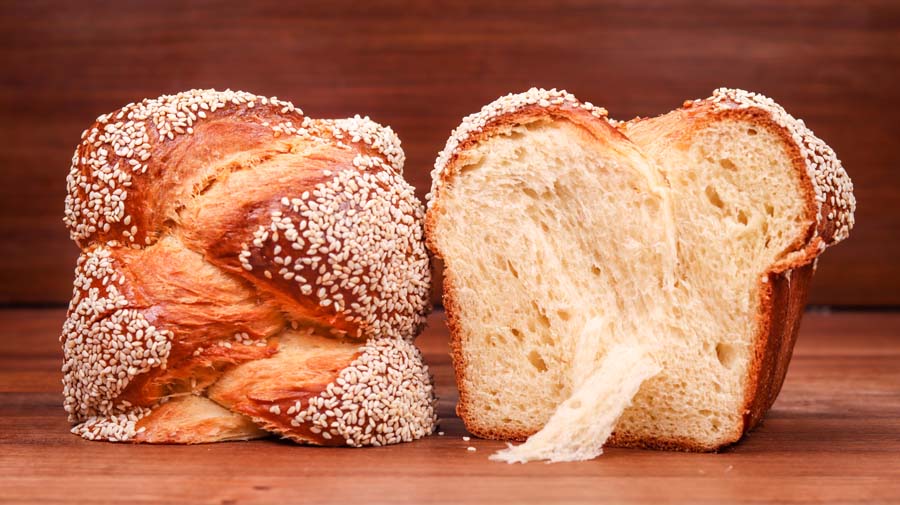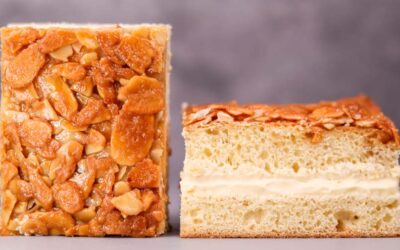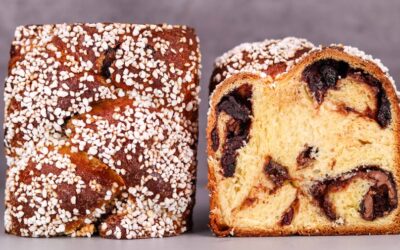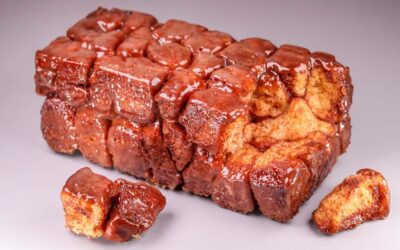As of the time of writing it has been 3 years and 4 months since I started my YouTube channel. For the first 3 years I was a big fan of pre-ferments, and I was really into hand-kneading dough. The whole time I was making videos using the principles that I showed and of course it all worked just fine.
But then I started making my comparison series and discovering new (to me) techniques. One of them being long cold fermentation and the other being the no-knead method. Both of those techniques have changed my breadmaking style forever. I have not kneaded a single dough in 2023 so far and I have very rarely used a pre-ferment. I believe the kneading is a waste of time and energy when it comes to making small batches of dough at home.
And this no-knead brioche recipe is proving my statement even further. See, the thing with brioche up until now (for me) is that it always required a mixer. It was the only dough recipe on my channel that I always used a mixer for and because of the high egg and butter content I never even considered that it could be made properly by hand kneading, and the no-knead method did not ever cross my mind.
There were a couple attempts of me trying to make brioche by hand. It took an extreme amount of time and effort to get the dough together. So much that I would go back to using the mixer afterwards. Brioche had me beat once again. But that was a while ago.
Since I have been exclusively using the no-knead method this year I thought it is time to try it on brioche dough. The thing with gluten is that it develops over time and not by mechanical action. The no-knead method relies on time for gluten development and on folding for gluten strength and tension. It is an extremely simple yet powerful principle that works every time.
And if you are watching this video or reading this post, then it has certainly worked here too. With just a little time and a few folds the brioche dough was nice and glutenous. And it’s not some watered-down version of brioche either. It’s a full-on all egg 40% butter dough. I used cake making principles to incorporate the butter.
You can use this dough for any of my previous brioche recipes. The only difference this time is that I made a smaller batch which was half of what I used to make with the mixer.
Watch the video down below for detailed instructions.
Ingredients
For the dough –
250g (8.8oz) white bread flour
150g (5.3oz) egg, around 3 medium eggs
6g (0.21oz) salt
4g (0.14oz) instant dry yeast or 4.8g (0.17oz) active dry yeast or 12g (0.42oz) fresh yeast
30g (1oz) sugar
100g (3.5oz) soft butter
The flour I use has a protein content of 13%. If your flour is weaker, then you may need to lower the amount of egg.
If you are using active dry yeast, then you may need to let it sit in the liquid for 10 minutes before adding the other ingredients or else it could take a lot longer to raise the dough.
If you are curious about why the dough contains butter, egg, and sugar, click the links to learn more about the effects those ingredients have on bread dough.
Method
- In a large bowl combine the eggs, yeast, salt, and sugar. Whisk until the sugar has dissolved. Add 4 tablespoons of the flour and whisk until smooth. This will make it easier to incorporate the softened butter.
- Add the butter and whisk until smooth.
- Add the remaining flour and mix to a dough. *Desired dough temperature around 23C – 24C (73F – 75F). I went for a lower temperature because I wanted to let the dough sit at room temperature before the first fold.
- Rest the dough for 20 minutes.
- Fold #1.
- Refrigerate the dough for 20 minutes.
- Fold #2.
- Refrigerate the dough for 20 minutes.
- Fold #3.
- Refrigerate the dough for 20 minutes.
- Fold #4.
- Cold ferment the dough for 12 – 24 hours. After this you can use it for any brioche recipe.
- If you are going to recreate the loaf, then divide the dough into 3 equal pieces and pre-shape.
- Leave to rest for 30 minutes.
- Roll the dough out and do a three-stand braid.
- Place in a greased 1.5lb (680g) loaf tin.
- Final proof for 2 – 2.5 hours.
- Glaze with egg, sprinkle with sesame seeds, and bake for 40 minutes at 160C (320F) fan on or 180C (356F) fan off.
I’m sure you can improve and simplify this recipe even further. For now, this is the one I will be using until I come up with something even better.
Keep in mind that the conditions in each kitchen are different, so fermentation times may vary for you. It is up to the baker to control the bread and react accordingly.
Your oven may be different too, so your baking time may vary.
Watch the video here



